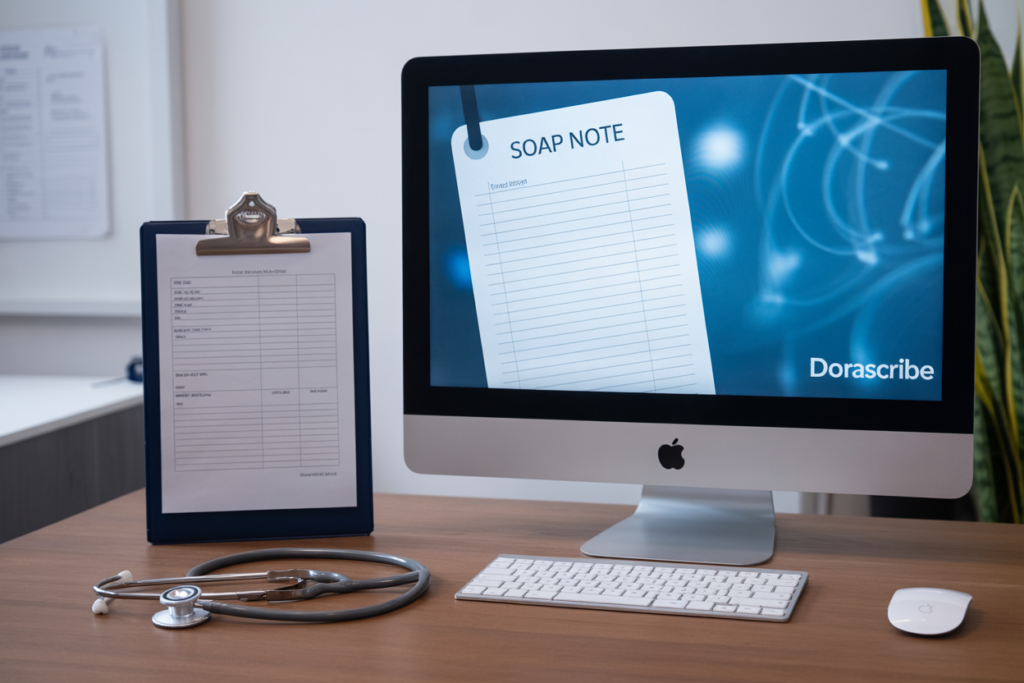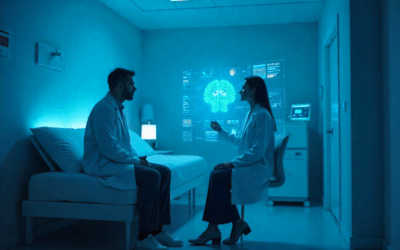In 2025, accurate medical documentation remains a cornerstone of quality healthcare. While dictation and transcription are often used interchangeably, they serve distinct purposes in improving efficiency and precision within clinical workflows.
Dictation involves speaking thoughts, instructions, or notes aloud, often captured by a device or software, enabling real-time data entry. Transcription, however, converts those spoken words into structured, written text, ensuring that oral communication is accurately documented for future use.
Understanding the difference between dictation and transcription is crucial for healthcare providers. Dictation generates content instantly, while transcription ensures that content is accessible, detailed, and formatted correctly for medical records. This blog explores the nuances of both processes, their applications, and how advancements in 2025 are shaping medical documentation.
Understanding Dictation and Transcription in 2025
Both dictation and transcription play vital roles in creating accurate and efficient medical records, but their functions are distinct:
- Dictation: Allows doctors to capture notes during consultations without typing.
- Transcription: Converts recorded audio into comprehensive text for integration into EMRs (Electronic Medical Records).
Each method enhances workflow and ensures healthcare professionals spend more time focusing on patient care rather than paperwork.

What Is Dictation?
Dictation empowers healthcare providers to capture their observations and instructions verbally. Modern speech recognition tools in 2025 can now convert spoken words into text with incredible speed and accuracy.
How Healthcare Professionals Use Dictation
- Document patient histories on the go.
- Record clinical impressions during examinations.
- Create detailed SOAP notes immediately after consultations.
By eliminating the need for manual note-taking, dictation tools significantly reduce administrative burdens, giving healthcare providers more time for patient care.
What Is Transcription?
Transcription remains an essential part of medical documentation in 2025. It involves listening to recorded dictations and converting them into accurate, well-structured text.
Types of Medical Transcription:
- Manual transcription: Performed by skilled transcriptionists with expertise in medical terminology.
- AI-assisted transcription: Leverages machine learning to speed up and refine the transcription process.
Why Transcription Matters:
- Ensures precise documentation of diagnoses, treatments, and medical plans.
- Reduces errors in patient records.
- Maintains compliance with stringent data privacy regulations like HIPAA (USA), PIPEDA (Canada), and POPIA (South Africa).

Key Differences: Dictation vs. Transcription in Healthcare
Purpose
- Dictation: Captures spoken content in real-time.
- Transcription: Converts and organizes recorded speech into formal documents.
Timing
- Dictation: Happens during or immediately after patient interactions.
- Transcription: Often occurs after recordings are completed.
Accuracy
- Dictation: Relies on clear speech and device efficiency.
- Transcription: Ensures comprehensive documentation for future reference.
By integrating both methods, healthcare providers can achieve seamless and precise documentation.
The Role of Transcription in Modern Medical Workflows
In 2025, transcription plays a pivotal role in improving medical efficiency and compliance. It ensures that voice-recorded notes are transformed into actionable patient records.
Benefits of Medical Transcription
- Captures detailed, accurate documentation for EMRs.
- Supports faster decision-making by streamlining workflows.
- Reduces administrative burdens for healthcare professionals.
AI-powered transcription tools like DoraScribe now handle complex terminology and adapt to individual speaking styles, further improving accuracy and efficiency.

How Dictation and Transcription Enhance Healthcare in 2025
1. Streamlining Documentation
Combining dictation and transcription allows doctors to capture notes quickly and ensure they’re converted into structured, shareable formats.
2. Enhancing Patient Care
With less time spent on documentation, providers can dedicate more attention to patients, fostering better communication and care quality.
3. Ensuring Compliance
Advanced transcription tools in 2025 prioritize data security, adhering to global privacy standards such as HIPAA, PIPEDA, and GDPR.
Technological Advancements in Dictation and Transcription
AI-Powered Dictation and Transcription
AI advancements have transformed how medical professionals capture and process data. Tools like Dorascribe AI allow real-time dictation, while AI transcription systems ensure accuracy and speed.
Features Driving Efficiency
- Real-time integration with EMR platforms.
- Adaptability to multiple languages and accents.
- Continuous learning algorithms for context-specific transcription.
Speech Recognition Software in 2025
Speech recognition technology is now faster and more accurate than ever. With features like voice commands and real-time transcription, these tools have become indispensable in healthcare.
Choosing the Right Solution
For healthcare providers, the choice between dictation and transcription depends on specific needs:
- Use dictation for fast, on-the-go note-taking.
- Leverage transcription for precise and structured documentation.
Combining these methods with AI-powered tools like DoraScribe ensures optimal efficiency, accuracy, and compliance.
Conclusion: Transform Your Medical Documentation in 2025
Dictation and transcription are foundational to modern healthcare workflows. They save time, reduce errors, and empower healthcare professionals to focus on what matters most: patient care.
With AI-powered solutions like DoraScribe, the integration of dictation and transcription has never been easier. These tools enhance efficiency, improve accuracy, and ensure compliance with global data privacy standards.
Elevate your practice in 2025 with cutting-edge medical documentation solutions.




